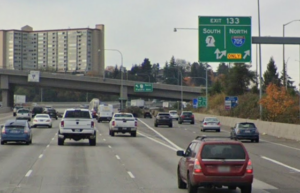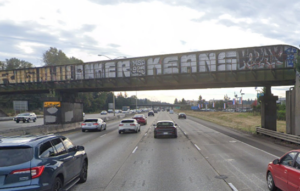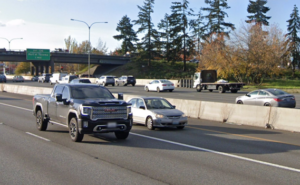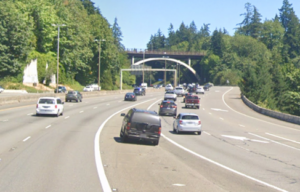Free Case Evaluation
(253) 272-5226Free Case Evaluation
(253) 272-5226I-5 is Washington State’s busiest highway, serving commuters, truckers, and travelers every day. Unfortunately, it’s also a frequent site of accidents. Heavy traffic, ongoing construction, unpredictable weather, and risky driving behaviors (like tailgating and distractions) all play a role in making certain stretches more dangerous.
We recently researched which parts of I-5 in Pierce and Thurston Counties see the most serious crashes. In this post, we’ll share what we found, explore possible reasons these areas are high-risk, and offer tips to help you stay safe.
Using data from the Washington State Department of Transportation’s Crash Portal, we reviewed accident trends from 2020 to 2024. Our research revealed four “hotspots” where crashes are more frequent. For this post, we’re focusing on fatal and serious injury crashes. In other words, there are many more minor accidents that aren’t included in these numbers.

Between 2020 and 2024, this stretch of I-5 saw 21 fatal and serious injury crashes, making it one of the most dangerous areas in Pierce County. Several factors contribute to the risks:
Drive safer: If possible, avoid this area during rush hour and be mindful of Tacoma Dome events, which can create traffic bottlenecks. Stay alert for merging drivers and sudden slowdowns. Give yourself plenty of time to switch lanes as many drivers make last-minute decisions here.

The stretch of I-5 near JBLM can be deceptively dangerous. Between 2020 and 2024, this corridor saw 24 fatal and serious injury crashes, slightly more than the area around the Tacoma Dome. Several factors contribute to the risks:
Drive safer: Expect congestion, especially during early mornings and evenings when base traffic is heaviest. Stay patient, avoid aggressive lane changes near merging areas, and leave extra following distance to account for sudden slowdowns.

Fife sees a lot of traffic—and a lot of accidents. Between 2020 and 2024, we counted 19 fatal and serious injury crashes around exits 136A and 137.
Here’s what makes this stretch particularly dangerous:
Drive safer: Stay predictable. Avoid weaving between lanes and sudden movements. Be mindful of large trucks, giving them extra space, as they have longer stopping distances and larger blind spots. Watch for temporary construction zones and reduced speed limits.

Overall, we noted far more accidents on I-5 in Pierce County than in Thurston County. However, one high-risk stretch in Thurston County stood out: the Hawks Prairie Interchange, where we counted 11 fatal and serious injury crashes between 2020 and 2024.
Why is this area more accident-prone?
Drive safer: Reduce speed as you approach this stretch, as traffic conditions can change quickly. Stay alert for merging vehicles and adjust your speed accordingly. Avoid tailgating as rear-end collisions are especially common here.
I-5 is a vital route connecting many of Washington’s major cities, but heavy traffic and unpredictable conditions can make driving stressful. A little extra caution can help keep your travels smooth and safe.
Here are a few ways to be a defensive driver:
Most importantly, stay calm and give yourself extra time. You never know when an exit will be closed or traffic will back up. Leaving a few minutes early can help you avoid frustration—and reduce the temptation to drive aggressively.
Even when you drive carefully, you can’t always predict what other drivers will do. If you’ve been injured in an accident on I-5, you may be facing medical bills, lost wages, and a long recovery. Our experienced team is here to help you understand your legal options and fight for the compensation you deserve.
Schedule a free consultation today to discuss your case. There’s no obligation, and we only get paid if we win your case. Contact us here to get started.